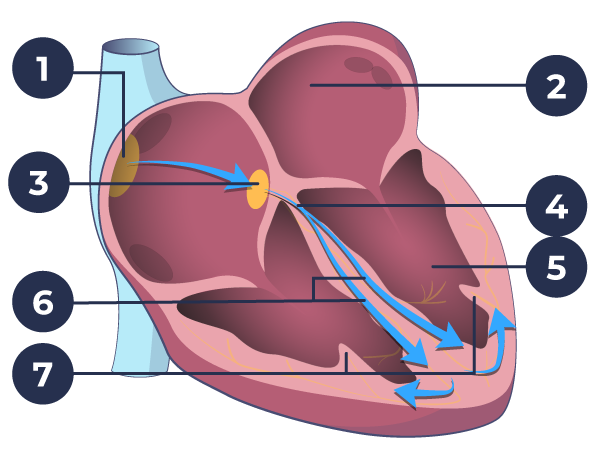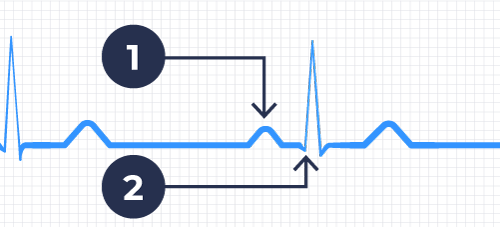The control of the heart’s pumping function takes place electrically. The sinus node regularly sends out signals into the atria – calmly when we are at rest and faster when we are active – which causes the atria to empty blood into the heart chambers. The electrical signals from the atria accumulate in the AV node and are led from here quickly down through a wiring system to the heart chambers.
This signals the right and left ventricles to empty. Normally, this electrical control causes a pulse that fluctuates – depending on the activity level – between 60 and 150 beats per minute. Some have a slightly lower resting heart rate, especially if you are in really good shape. And some may raise their heart rate higher than others, especially children and adolescents. We do about 100,000 heartbeats a day. For up to a hundred years. It becomes a total of 3-4 billion heartbeats over the course of a lifetime. Impressive that for most of us it goes without a hitch.
Each time the heart chambers are activated and emptied, it gives rise to a pulse that you can feel if you touch your wrist or neck. You can read about how to check your pulse and why it is important here. You can also measure it if you use some form of electronic heart rate monitor – for example in connection with sports activities.

- Sinus node
- Left Atrium
- AV-node
- Bundle of his
- Left ventricle
- Right and left bundle branches
- Purkinje fibers

Normal heart rhythm (“Sinus rhythm”)
- “P-wave”: the electrical activation of the atria
- The “QRS interval”: Electrical activation of the heart chambers